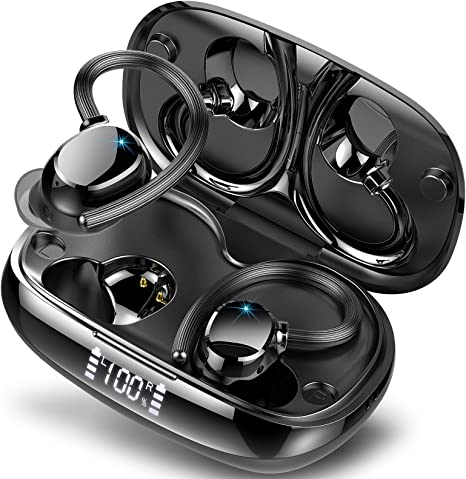Decoding the Modern Workspace: A Guide to Ergonomics and Active Seating
Update on Oct. 11, 2025, 4:49 p.m.
For decades, the conversation around office wellness has centered on one piece of furniture: the ergonomic chair. We’ve been taught the gospel of 90-degree angles, lumbar support, and adjustable armrests. We have perfected the art of sitting still. But a growing body of research, supported by the daily experience of millions, suggests a sobering truth: a “perfect” static posture is still a static posture. And the human body was not designed for stillness.
Your desk is not a neutral zone. It is an environment that actively imposes biomechanical stress on your body. Prolonged sitting, even in the most expensive chair, can lead to a cascade of negative effects: reduced metabolic rate, poor circulation in the lower limbs, and, according to studies in publications like Spine Journal, increased pressure on lumbar discs. The problem isn’t just how you sit, but the relentless, uninterrupted act of sitting itself.
So we’ve perfected the art of sitting still. But what if the art lies in not sitting still at all? This realization has sparked a revolution in office design, moving beyond static support to dynamic solutions that reintroduce movement into the workday.

The Ergonomic Baseline: A Foundation, Not a Fortress
Let’s be clear: traditional ergonomics are essential. A proper setup—with your monitor at eye level, your wrists in a neutral position, and your back supported—forms the non-negotiable foundation of a healthy workspace. It prevents immediate strain and repetitive stress injuries.
However, it only solves half the problem. It optimizes you for a single, static task. It doesn’t address the physiological consequences of muscular inactivity. To truly build a healthy and productive workspace, we must look beyond static support and embrace dynamic solutions.
The Rise of Dynamic Solutions: A Comparative Guide
The modern market offers several compelling ways to break free from static posture. Each has distinct advantages and important trade-offs.
1. Standing Desks
The most popular alternative to traditional sitting, standing desks effectively combat sedentarism by engaging the large muscles of the legs and core. They increase energy expenditure (NEAT) and allow for easy posture changes.
- Pros: Burns more calories than sitting, encourages movement, may reduce back pain.
- Cons: Can lead to foot, leg, and back fatigue if overused; not ideal for all tasks (e.g., those requiring fine motor control); requires proper anti-fatigue matting.
2. Balance Balls and Active Stools
These seating options force you to engage your core muscles to maintain stability. They encourage “micro-movements” and can help improve posture and balance.
- Pros: Promotes core strength, discourages slouching, inherently dynamic.
- Cons: Lack of back support can lead to fatigue over long periods; can be unstable; not suitable for everyone, especially those with balance issues.
While both standing and balancing offer compelling benefits, they also present compromises—sacrificing either stability or rest. What if there was a way to gain the benefits of lower-body movement without sacrificing the stability needed for focused upper-body work? This is the promise of the active seating category.

The Next Frontier: Active Seating
Active seating is a concept, not just a single product. It refers to any solution that allows or encourages the body to move while seated. The goal is to keep the body’s metabolic engine running and its joints lubricated, all while the user remains seated and productive.
The most effective and easily integrated form of active seating is the under-desk exerciser. These devices—including pedal exercisers, cycles, and ellipticals—isolate movement to the lower body, leaving your upper body stable and free to type, write, or focus on a screen. They represent a powerful synthesis: the ergonomic support of a good chair combined with the circulatory and metabolic benefits of continuous movement.
Anatomy of an Effective Active Seating Tool
Not all under-desk devices are created equal. An effective tool is defined by how seamlessly it integrates into your workspace and workflow. Using a well-designed under-desk elliptical like the FOUSAE MC57B as an anatomical model, we can identify the key ergonomic features to look for:
- A Low-Impact, Fluid Motion: The primary benefit of an elliptical path is that it’s exceptionally gentle on the joints. Unlike the high-impact force of running, a smooth glide protects the ankles, knees, and hips, making it safe for prolonged use and for individuals with joint sensitivities.
- A Compact, Non-Intrusive Design: This is a critical, often overlooked, ergonomic factor. The device must fit under your desk without forcing you into an unnatural posture. A key metric is the maximum pedal height. A compact design (e.g., a total unit height around 8.5-10 inches) ensures that your knees have ample clearance, preventing painful collisions with the underside of your desk.
- Bi-Directional Pedaling: The ability to pedal both forwards and backwards is not a gimmick. It allows for subtle variations in muscle engagement, targeting the quadriceps and hamstrings slightly differently. This helps promote more balanced muscle activation over time.
- Silent Operation: As discussed previously, a tool designed for a workspace must be acoustically invisible. A quiet motor ensures that the movement remains a subconscious, background activity rather than a foreground distraction for you or your colleagues.
Conclusion: Building Your Personalized Active Workstation
There is no single “best” solution for a healthy workspace. The ideal setup is not static, but dynamic, layered, and personalized. It’s about creating an environment that gives you options to move between sitting, standing, and active sitting throughout the day.
Start by optimizing your foundation with good ergonomic principles, then introduce dynamic elements that fit your tasks and your body. An under-desk elliptical may be the perfect solution for long periods of focused computer work, while a standing desk might be better for shorter tasks and calls. The goal is to build a workstation that serves you, not one that confines you.




















